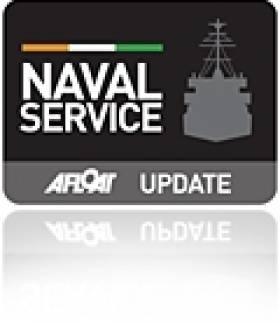Displaying items by tag: YB Yeats final journey
#YeatsFinalJourney – Peter Murtagh of The Irish Times writes of a long forgotten record of the return to Ireland of the remains of WB Yeats.
The records emerged from the Military Archives and is available online to coincide with the 150th anniversary on Saturday of the poet's birth.
The body of the poet, who died in January 1939 and was buried at Roquebrune-Cap-Martin in south-eastern France, was brought by sea from Nice to Galway in September 1948 for reinterring in Drumcliffe Churchyard in Co Sligo. It was transported by the LE Macha, the first overseas deployment of a ship of the Naval Service.
The operation was overseen by the then minister for external affairs, Sean McBride, son of Maud Gonne-McBride, the subject of unrequited, but poetically inspiring, amour from the poet.
The rediscovered record of the repatriation includes just over 30 minutes of film - silent, grainy and mostly black and white footage of the Macha's mission; more than 80 black and white photographs; the ship's log; and five informal letters to the first head of the Naval Service, Captain HJ Jerome, from an officer on board the Macha, Commander Thomas McKenna, who in due course succeeded Capt Jerome to lead the service.
To this has been added a recording of the only surviving member of the crew, former Petty Officer Patrick Campbell, who is now aged 90 but has a clear recollection of the mission.
"When we docked in Nice there was great excitement because it was the first Irish ship [there flying the] tricolour. We did get a good reception," Mr Campbell told a researcher at the Archive after his daughter, Antonette, contacted the Defence Forces earlier this year saying her father had a story to tell.
For much more, The Irish Times reports here.





























































